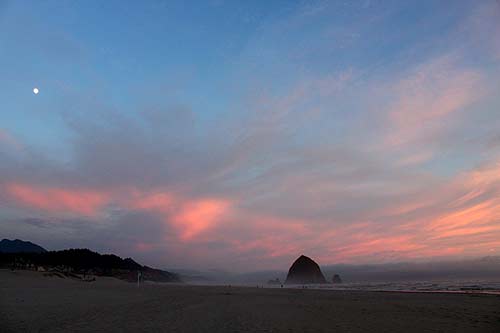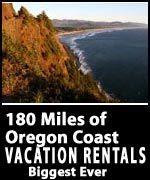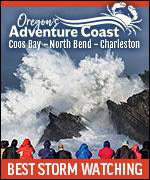May's Full Moon? Let's Supersize It: Washington, Oregon, Coastal Astronomy
Published 05/05/2020 at 7:24 PM PDT
By Oregon Coast Beach Connection staff
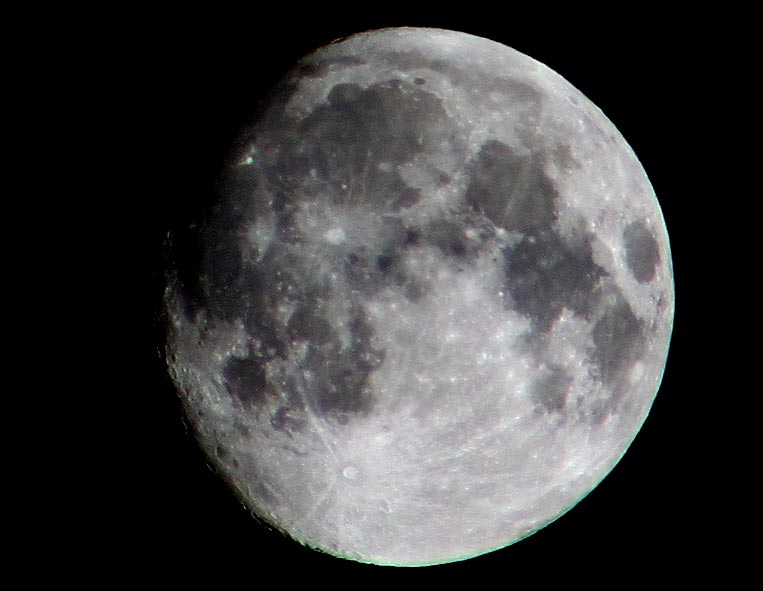
Includes exclusive listings; some specials in winter
In Cannon Beach:
Includes rentals not listed anywhere else
In Manzanita, Wheeler, Rockaway Beach:
Some specials for winter
In Pacific City, Oceanside:
Some specials for winter
In Lincoln City:
Some specials for winter
In Depoe Bay, Gleneden Beach:
Some specials for winter
In Newport:
Look for some specials
In Waldport
Some specials for winter
In Yachats, Florence
Some specials for winter
(Portland, Oregon) – May’s full moon will be another biggie, this time with the third and final supermoon of the year happening May 7. This new chunky moon goes by a few names: Flower Moon, Planting Moon or Milk Moon, according to OMSI’s astronomy expert Jim Todd. He added it’s also the third-closest, third-biggest and third-brightest.
Supersized moons are not rare, but they are interesting. At least two, or perhaps a half dozen, occur each year. So, this phenomenon is not unusual or unheard of, Todd said.
This time around, if you’re looking from Portland, Seattle, Ashland, Skamania, or anywhere on the Oregon and Washington coast, the moon will appear full on the morning of May 7 at 3:45 a.m., which is the overnight hours of Wednesday night. Luckily, for everyone from Bandon, Yachats, Seaside, Raymond, the Olympic National Park region over to Seattle, Portland and Eugene, weather reports show clear skies overnight and the following night.
When it’s officially full, the moon will be high above the southwestern horizon, which means those just barely east of the Washington and Oregon Cascades will still be able to see it. Earlier that day, Todd said this supermoon will be a tad above the eastern horizon at perigee at 8:02 p.m., which means closest to the Earth – at some 223,856 miles.
Those on the Washington and Oregon coasts may have problems seeing that because of hills to the east of beach towns.
Todd said on Wednesday evening, the near full moon will rise directly from the east at 7:45 p.m., followed by sunset at 8:24 p.m. in the west.
“The following morning, the sun will rise at 5:50 a.m., followed by the moon set at 6:18 a.m.,” Todd said.
What will you see?
“When a full moon occurs at or near the perigee, it looks 14% larger and 30% brighter than a typical full moon,” Todd said. “That’s what the term ‘supermoon’ refers to. Generally, supermoon is used to refer to a full moon 90 percent or closer to actual perigee. This April's full moon is the one that most closely aligns with lunar perigee.”
The full lunar cycle is 29.5 days, Todd said, and a full moon occurs right in the middle of that. It’s recognizable by a near perfect spherical shape.
Then, there’s a weird little trick of physics the moon pulls on us.
“Technically speaking, the full moon only lasts for about a second,” Todd said. “This difference cannot be seen with the naked eye. Without a telescope, it is difficult to distinguish between a moon that is 100% illuminated and a moon that is 99% illuminated. While the Moon may only be 100% full for about one minute, it looks ‘full’ for about three days. On Tuesday, the precise instant of full moon comes to pass at 7:35 p.m. when it is just before sunset and barely above the eastern horizon.”
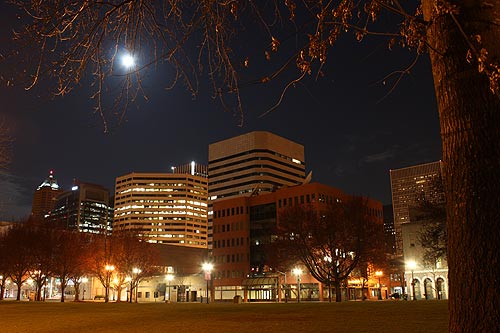
Fun Astronomy Facts:
Todd said the moon travels in an ellipse that sends it close to us and then farther in its orbit. When the moon is at its farthest away from us this ellipse is called apogee, which about 251,966 miles from earth on average.
“Its closest point is the perigee, which is an average distance of about 225,744 miles from earth,” Todd said. “On average, the distance from earth to the moon is about 238,855 miles. During every 27-day orbit around earth, the Moon reaches both its apogee and perigee.”
Since OMSI is closed during the current pandemic situation, Todd is featuring a regular set of videos about astronomy from a local perspective with his Backyard Stargazing series. Check out the museum’s Facebook page to see these fascinating and fun installments.
Oregon Coast Hotels in this area - Where to eat - Maps - Virtual Tours
Cannon Beach Lodging
Nehalem Bay Lodgings
Manzanita Hotels, Lodging
Three Capes Lodging
Pacific City Hotels, Lodging
Lincoln City Lodging
Depoe Bay Lodging
Newport Lodging
Waldport Lodging
Yachats Lodging
Oregon Coast Vacation Rentals
Oregon Coast Lodging Specials
More About Oregon Coast hotels, lodging.....
More About Oregon Coast Restaurants, Dining.....
LATEST Related Oregon Coast Articles
A curious weather phenomenon that happens more out here
Curb, Road Construction Resumes in Lincoln City as Oregon Coast Season Begins...
Crews return Sept 15 with some dust and small delays. Traffi
NASA Announces First Evidence of Life on Mars in Possible Biosignature
In a former riverbed billions of years old, they found spots with interesting compounds. Astronomy
Portland, Oregon - Beaverton, Oregon Weather and Alerts | Current Conditions,...
Current weather conditions and alerts for Portland and Beaverton
Oregon Coast Scenic Railroad's Fame Engine Turns 100 Years Old with Special Runs
Sept 20 and 21 various special rides. Garibaldi events, Rockaway Beach events, Wheeler events
South Oregon Coast Goes Interstellar: Coos Bay's Sunset Bay Astronomy Fest Se...
Shore Acres State Park gets spacey. Coos Bay events
Swarm of 12 Quakes Fire Off 100 Miles from South Oregon Coast
After the initial 5.8, ranging in magnitude from 2.7 to 5.1: Coos Bay, Port Orford, Bandon, Gold Beach. Geology, weather
SOLVE Cleanup Happens Along Oregon Coast, Inland Sept 20 Through 28
SOLVE is inviting volunteers to take part. Brookings events, Gold Beach events, Port Orford events, Coos Bay events, Bandon events, Florence events, Yachats events, Newport events, Lincoln City events, Rockaway Beach events, Manzanita events, Cannon Beach events, Seaside events, Astoria events
Back to Oregon Coast
Contact Advertise on BeachConnection.net
All Content, unless otherwise attributed, copyright BeachConnection.net Unauthorized use or publication is not permitted







